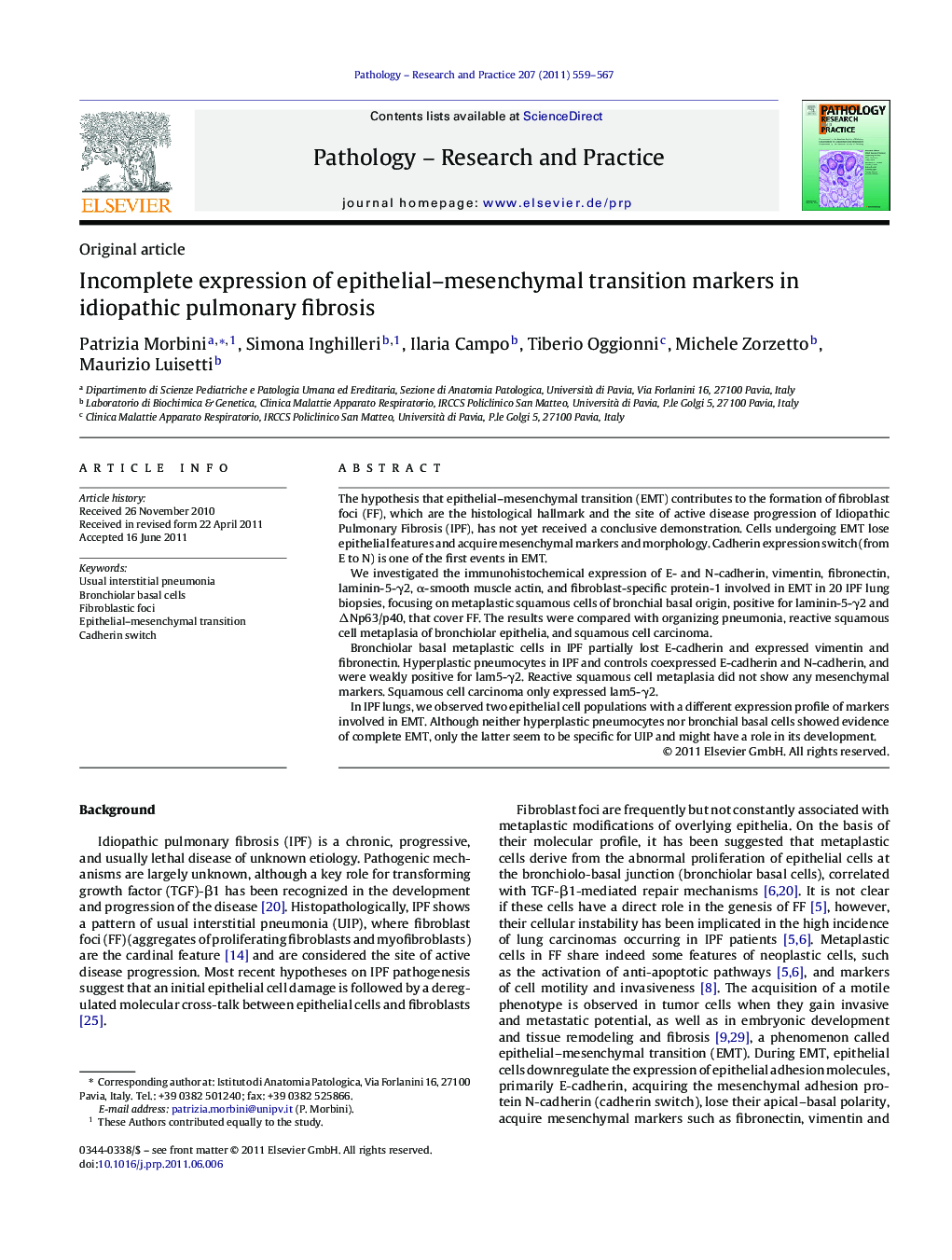| Article ID | Journal | Published Year | Pages | File Type |
|---|---|---|---|---|
| 2156013 | Pathology - Research and Practice | 2011 | 9 Pages |
The hypothesis that epithelial–mesenchymal transition (EMT) contributes to the formation of fibroblast foci (FF), which are the histological hallmark and the site of active disease progression of Idiopathic Pulmonary Fibrosis (IPF), has not yet received a conclusive demonstration. Cells undergoing EMT lose epithelial features and acquire mesenchymal markers and morphology. Cadherin expression switch (from E to N) is one of the first events in EMT.We investigated the immunohistochemical expression of E- and N-cadherin, vimentin, fibronectin, laminin-5-γ2, α-smooth muscle actin, and fibroblast-specific protein-1 involved in EMT in 20 IPF lung biopsies, focusing on metaplastic squamous cells of bronchial basal origin, positive for laminin-5-γ2 and ΔNp63/p40, that cover FF. The results were compared with organizing pneumonia, reactive squamous cell metaplasia of bronchiolar epithelia, and squamous cell carcinoma.Bronchiolar basal metaplastic cells in IPF partially lost E-cadherin and expressed vimentin and fibronectin. Hyperplastic pneumocytes in IPF and controls coexpressed E-cadherin and N-cadherin, and were weakly positive for lam5-γ2. Reactive squamous cell metaplasia did not show any mesenchymal markers. Squamous cell carcinoma only expressed lam5-γ2.In IPF lungs, we observed two epithelial cell populations with a different expression profile of markers involved in EMT. Although neither hyperplastic pneumocytes nor bronchial basal cells showed evidence of complete EMT, only the latter seem to be specific for UIP and might have a role in its development.
